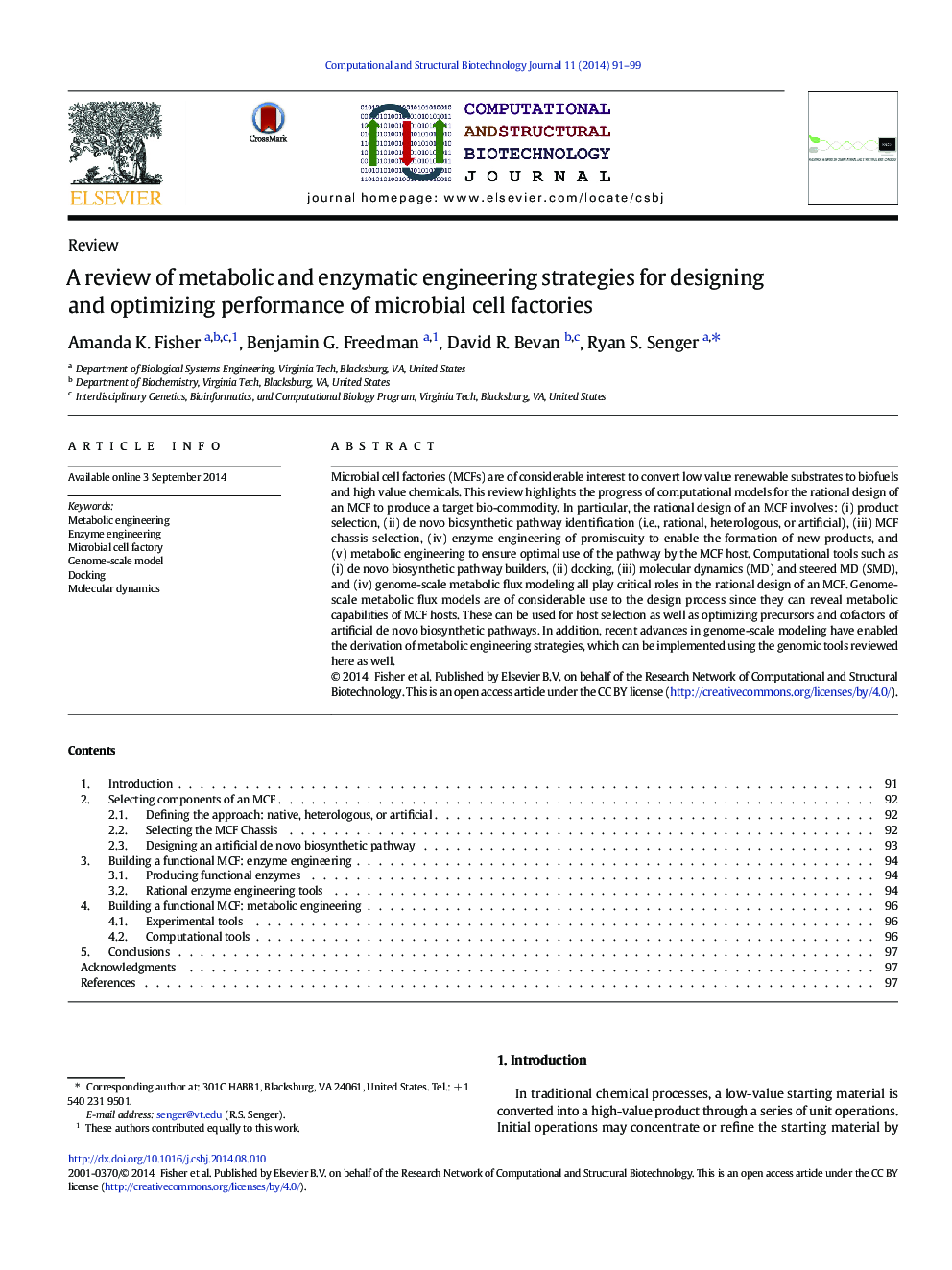| کد مقاله | کد نشریه | سال انتشار | مقاله انگلیسی | نسخه تمام متن |
|---|---|---|---|---|
| 2079215 | 1079849 | 2014 | 9 صفحه PDF | دانلود رایگان |
Microbial cell factories (MCFs) are of considerable interest to convert low value renewable substrates to biofuels and high value chemicals. This review highlights the progress of computational models for the rational design of an MCF to produce a target bio-commodity. In particular, the rational design of an MCF involves: (i) product selection, (ii) de novo biosynthetic pathway identification (i.e., rational, heterologous, or artificial), (iii) MCF chassis selection, (iv) enzyme engineering of promiscuity to enable the formation of new products, and (v) metabolic engineering to ensure optimal use of the pathway by the MCF host. Computational tools such as (i) de novo biosynthetic pathway builders, (ii) docking, (iii) molecular dynamics (MD) and steered MD (SMD), and (iv) genome-scale metabolic flux modeling all play critical roles in the rational design of an MCF. Genome-scale metabolic flux models are of considerable use to the design process since they can reveal metabolic capabilities of MCF hosts. These can be used for host selection as well as optimizing precursors and cofactors of artificial de novo biosynthetic pathways. In addition, recent advances in genome-scale modeling have enabled the derivation of metabolic engineering strategies, which can be implemented using the genomic tools reviewed here as well.
Journal: Computational and Structural Biotechnology Journal - Volume 11, Issue 18, August 2014, Pages 91–99
